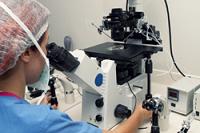Advertisment
Pain control remains inadequate in RA patients

Despite improvements in rheumatoid arthritis (RA) management, pain control remains inadequate in some patients even when inflammation is well controlled, according to a small Dutch study.
Among RA patients assessed with the painDETECT screening tool, 17% had likely neuropathic pain and 21.4% had possible neuropathic pain, even though almost 75% of them were in remission, reported Peter M. ten Klooster, PhD, of the University of Twente in Enschede, the Netherlands.
“Consequently, although inflammation contributes to pain in RA, it may not be the only factor and other pain mechanisms such as neuropathic pain may also play a role,” they wrote in Arthritis Research & Therapy.
Data for the study came from the Dutch Rheumatoid Arthritis Monitoring registry, a prospective multicenter initiative that monitors the course of RA patients.
The researchers assessed neuropathic pain symptoms using the Dutch version of the painDETECT, in which patients self-report various aspects of pain. An overall score of under 13 indicates that neuropathic pain is “unlikely,” while a score of 13-18 means “possible” neuropathic pain, and 18 or more “likely” neuropathic pain.
The analysis included 159 patients whose mean age was 57.2. Of these, 74.8% were in remission, defined as a disease activity score in 28 joints (DAS28) of less than 2.6. Another 13.2% of subjects had low disease activity (DAS28 2.6-3.2).
About 44% of the patients reported clinically significant pain in the past 4 weeks, with an average pain score ≥4 on the 10-point numerical rating scales of painDETECT.
The most common description of pain was that it felt like electric shocks (34.6%) or slight pressure (45.3%), but burning and prickling pain were reported by about 25% of patients.
Patients with and without neuropathic pain did not differ significantly on demographic or socioeconomic characteristics such as age, gender, and education. Prescribed disease-modifying anti-rheumatic drug and biologic therapy was almost identical for both groups.
Significantly more patients with neuropathic pain met the criteria for fibromyalgia (28.3% versus 6.1%, P<0.001) compared with those without neuropathic pain. Fibromyalgia is a condition often considered the prototypical central pain syndrome, they authors pointed out. Such criteria are met when the widespread pain index of the Fibromyalgia Survey Questionnaire is 7 or more and the symptom severity score is 5 or more, or when the widespread pain index is 3 to 6 and the symptom severity score is 9 or more.
In addition to more severe pain, those with neuropathic pain also reported more physical disability on the Health Assessment Questionnaire disability index (P<0.001). They also had worse physical and mental health status as measured on the 36-item Short-Form Health Survey (both P<0.001).
While the 28-tender joint count was significantly higher in the neuropathic pain group (P=0.016), other more objective parameters of disease activity, including C-reactive protein, erythrocyte sedimentation rate, and the 28-swollen joint count did not differ between the groups.
Multivariable logistic analysis showed that the occurrence of possible or likely neuropathic-like features was independently associated with worse physical and mental health, even when controlling for pain severity.
Recent research suggests that neuropathic pain-like symptoms in rheumatic conditions may be manifestations of dysregulation of central pain processing mechanisms. The precise mechanisms behind this pain augmentation are not yet known, the authors stated.
The study results could have important treatment implications, they noted. The goal of therapy in RA is to reach early sustained remission, and when this fails, drug therapy is typically adjusted, a strategy that could include the introduction of expensive biologics that may have unwanted side effects, they pointed out.
In addition, biologics and conventional RA medications typically target inflammation, whereas neuropathic pain does not consistently respond to traditional anti-inflammatory RA medications.
In some cases, rather than intensifying anti-inflammatory treatment, it might be more appropriate to target the neuropathic pain-like symptoms with, for example, neuromodulators and certain antidepressants, they suggested.
A major limitation of the study was the absence of a gold standard for neuropathic pain or central sensitization. As it was a cross-sectional study, it also did not allow for any determination of the direction of the association between neuropathic pain and clinical variables.
Authors and co-authors disclosed no relevant relationships with industry.
Reviewed by Robert Jasmer, MD Associate Clinical Professor of Medicine, University of California, San Francisco and Dorothy Caputo, MA, BSN, RN, Nurse Planner
Reference: Koop S, et al “Neuropathic-like pain features and cross-sectional associations in rheumatoid arthritis” Arthritis Res Ther 2015; DOI: 10.1186/s13075-015-07601-8.





